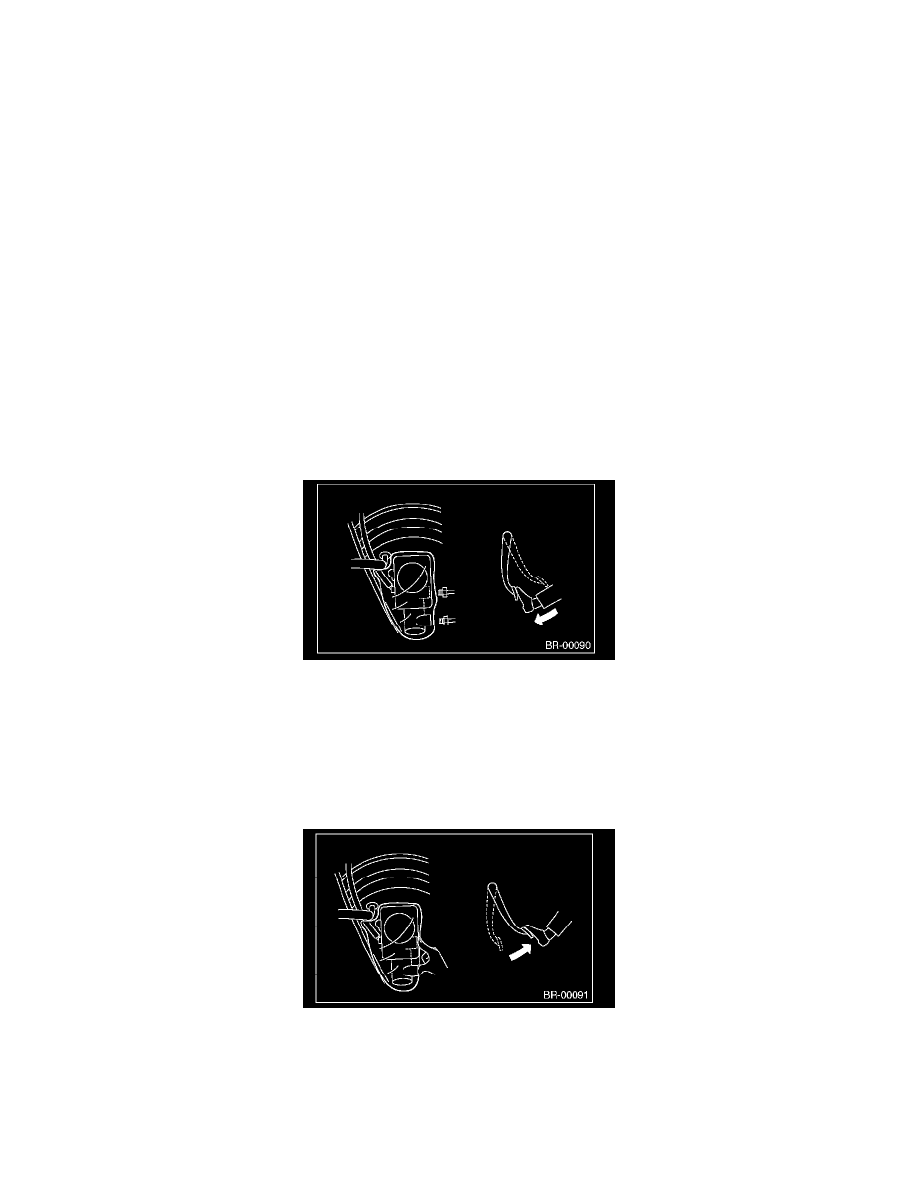Impreza GT F4-2.5L Turbo (2009)

Brake Bleeding: Service and Repair
Air Bleeding
PROCEDURE
CAUTION:
-
Do not let brake fluid come into contact with the painted surface of the vehicle body. Wash away with water immediately and wipe off if
it is spilled by accident.
-
Avoid mixing brake fluid of different brands to prevent fluid performance from degrading.
-
Be careful not to allow dirt or dust to enter the reservoir tank.
MASTER CYLINDER
NOTE:
-
When the master cylinder is disassembled or the reservoir tank is empty, bleed the master cylinder.
-
If bleeding of the master cylinder is not necessary, omit the following procedures, and perform bleeding of the brake line.
1) Fill the reservoir tank of the master cylinder with brake fluid.
NOTE:
While bleeding air, keep the reservoir tank filled with brake fluid to prevent entry of air.
2) Disconnect the brake line at primary and secondary sides.
3) Wrap the master cylinder with a plastic bag.
4) Depress the brake pedal slowly and hold it.
NOTE:
On the model with brake assist mechanism, the following phenomena occur when the brake pedal is depressed. However, those are not malfunction
but the phenomena that occur when the brake assist mechanism functions properly.
-
Brake feel is soft when brake pedal is depressed hard or quicker than usual.
-
A light crack is heard when brake pedal is depressed hard or quicker than usual.
5) Plug the outlet plug with your finger, and then release the brake pedal.
6) Repeat the step 4) and 5) several times.
7) Remove the plastic bag.
8) Install the brake pipe to the master cylinder.
Tightening torque:
Model with ABS
15 Nm (1.5 kgf-m, 11.1 ft-lb)
Model with VDC
